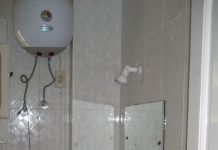Fiber optic cables form the core of modern communications infrastructure. The high-speed, light-based transmission of data along the cable gives it greater speed and reliability over long distances. Fiber optics are the heart of modern networks due to their functions, replacing traditional copper cables that used to be the standard. This importance, however, does require that someone take the time to check if the cables are doing their job.
Testing a fiber optic cable can be simple in some ways and complex in others. There are things that someone who needs to remember when testing these cables. You want to remember both safety and practical precautions so you can conduct the tests correctly.
A Few Basic Reminders
Here are some key reminders first. You need the right tools and equipment, including an optical inspection microscope, a power meter, an optical loss test set or kit, and reference cables. You might also need a fiber tracer, something to detect visual faults in the cable, and cleaning materials.
Protect Your Eyes
A relevant safety reminder is to protect your eyes. Fiber optic sources don’t normally have enough power to cause damage, but you should still take care to avoid damage. Fiber optic cables use infrared wavelengths that can’t be seen by the naked eye, and that makes it dangerous. Use the proper equipment to test the light, rather than looking at it yourself.
This is especially true for certain industries. Some industries rely on more powerful streams of light in their fiber optics. These can cause much more damage to the eyes, so it helps for people to just be careful all around.
Know How to Use the Equipment
You should always know how safety equipment is used. Gather the tools together and make sure they all work as intended and that you know how to use them. Know which buttons do what. It is important because you could get the wrong results on something sensitive if you don’t use the equipment correctly. While you’re at it, you should test the gear yourself before you get to work.
If the equipment has a power meter with internal memory, be sure to record it so you can track any changes that occur over time. Be sure to customize the data reports that the equipment puts out. This could be useful if you’re looking to save time during the installation or inspection.
Know the Cables to Test
You should check ahead of time and know what type of fiber optic cable you’re testing. Different fiber optic cable suppliers make a variety of products. While these are all the same at their core, there are a few differences between them that can affect your testing procedures.
If there is specialized equipment or procedures are needed, prepare those beforehand. Experts advise that you keep track of the cable layout for every fiber and calculate a loss budget, so you have an idea of what range of results would be normal for the situation you’re looking at. It’s a good idea to keep a record of the data generated so it can be reviewed later.
Identifying the type of cable used also determines the strength of the signal you can expect, or how many fibers you might find inside. This provides a framework you can use as a standard to compare with the results you get. Walking into the situation informed is crucial in testing fiber optics. Getting it right the first time also spares you from having to re-do everything.
See also: Identifying Key Stakeholders To Solve Internal Communication Problems With Social Intranet Software
Check the Continuity
Checking the continuity of the fiber using a visual tracer is meant to ensure the fibers aren’t damaged and trace them from end to end. Attach the fiber to test a visual tracer and look at the other end. You’ll see the light transmitted at the core safely this way. If you don’t see a light at the end, check for any bad sections because you might be looking at potential damage in the intermediate areas.
Visual signs of damage like cracks, kinks in the cable, and the like are key indicators that something is wrong internally. However, it still pays to be sure, so you should use a visual tracer kit to see if the internal workings have been damaged. While it is unlikely, the internal workings of the cable might not be fully intact even if nothing outside has visible defects.
Power and Loss
Every measurement of fiber optic power refers to the optical power in dB. The output is put to a receiver in “absolute” measurements, which leaves you to interpret the actual value of the power on display. This means that loss is a “relative” measurement of this potency. The difference in power before and after the component is what’s called optical loss and defines the performance of the cable itself.
Conclusion
Testing your fiber optic cables can be a simple process. All you need are the right equipment and a few safety precautions. Physical indications are often the first thing you look for, but you also need specialized equipment to check if the signal is working properly. If you know how things work and are ready, the inspection and testing themselves are easy.










































